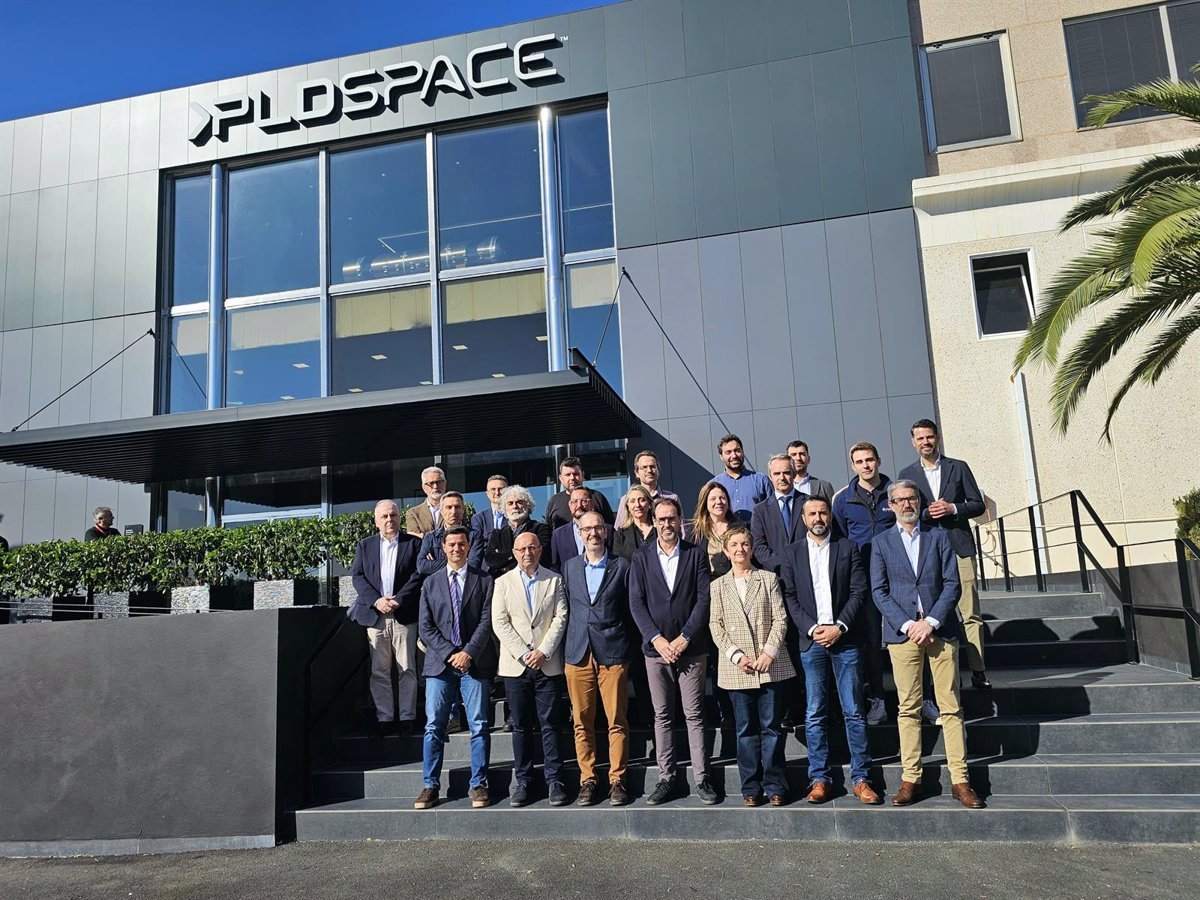
The Consellera of Innovation, Industry, Trade and Tourism, Marián Cano, has announced, in front of representatives of the aerospace industry, that the Generalitat has awarded a strategic plan for the development of this sector, which already brings together about a hundred high value-added companies in the Valencian Community, with an estimated value of 121,000 euros.
Specifically, the tender has been carried out by the General Directorate of Strategic Projects and the expected execution period is four months, as specified by the regional administration in a statement.
«This roadmap will determine the challenges they must face and will provide answers to all their needs to make the most of the potential of our region and identify new opportunities for our companies,» Cano said during her visit on Wednesday to the headquarters of the company PLD Space in Elche (Alicante).
Cano has presided over the presentation of the «priority challenges» and the «innovative solutions proposed» by the Specialized Innovation Strategic Committee (CEIE) in the Aerospace Industry, a technical body established at the request of Ivace+i Innovation to promote new R&D projects in this area through public-private collaboration.
The event, held at the PLD Space headquarters, brought together representatives from the aerospace industry and the innovation ecosystem of the Valencian Community, as well as the director of Castellón airport, Justo Vellón, and the general directors of Innovation and Industry, Juan José Cortés and Manuel Rosalén, respectively.
In this regard, Cano highlighted the «commitment» of the Consell to the development of this sector, justified by «its strategic importance, its cross-cutting nature, and the ripple effect it has on the rest of the productive fabric.»
«We celebrate that the aerospace industry is emerging strongly in our territory and that it is consolidating itself as a center of excellence, innovation, and entrepreneurship in this field,» she added.
Since 2012, the number of companies operating in this sector has increased by 47.5 percent, as stated in the Valencian Community’s Reindustrialization Strategy report, with the aim of «accelerating and intensifying this trend through the support of the regional administration.»
ESPAI AERO
«In order to contribute to this goal,» Cano has offered the support of the Generalitat Valenciana to Espai Aero, «the main regional association of this industry, which will participate in the open call by the Spanish Space Agency (AEE) for the development of solutions that improve response to extreme weather events in the Mediterranean area.»
The Department of Innovation also considers incentives to promote R&D+i linked to the aerospace sector, «even before the strategic plan has been approved,» as indicated by the Generalitat
According to the Director General of Innovation, Juan José Cortes, «Ivace+i Innovation will prioritize in its next call for grants those projects that address the priority challenges identified by a technical committee coordinated by the CEO of PLD Space, Ezequiel Sánchez.»
«As with other strategic areas, these initiatives will receive additional points in the evaluation process, giving them more access to public funding,» Cortes added.
«OPPORTUNITIES» FOR INNOVATION
On the other hand, the coordinator of the CEIE in the Aerospace Industry has presented the six «challenges» and 21 «solutions» proposed by his team, ranging from innovation in propulsion technologies to access to space to the development of infrastructures for the design, integration, and validation of satellites.
These conclusions, the result of four months of work, «focus on improving the sustainability of the sector through the development of reusable vehicles, the recovery of discarded modules, or the use of technologies for the detection and treatment of space debris,» among other actions.
In addition to promoting new solutions for urban, interurban, and regional air transport, committee members advocate for «enhancing the value-added services that the aerospace industry can provide to other sectors, as well as advancing in the development of algorithms and applications for other areas such as transportation or agriculture.»
The CEIE, which has brought together representatives from the scientific, technological, business, and civil society communities, has also identified «opportunities» to develop alternative navigation systems to satellite-based ones, as well as scientific equipment and instruments for space exploration missions and Earth observation.






